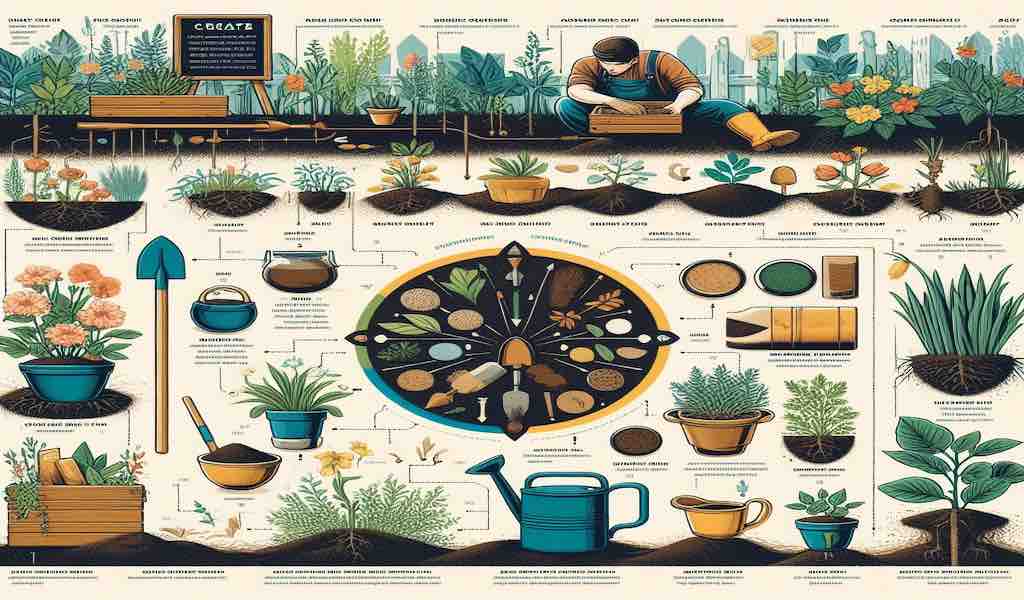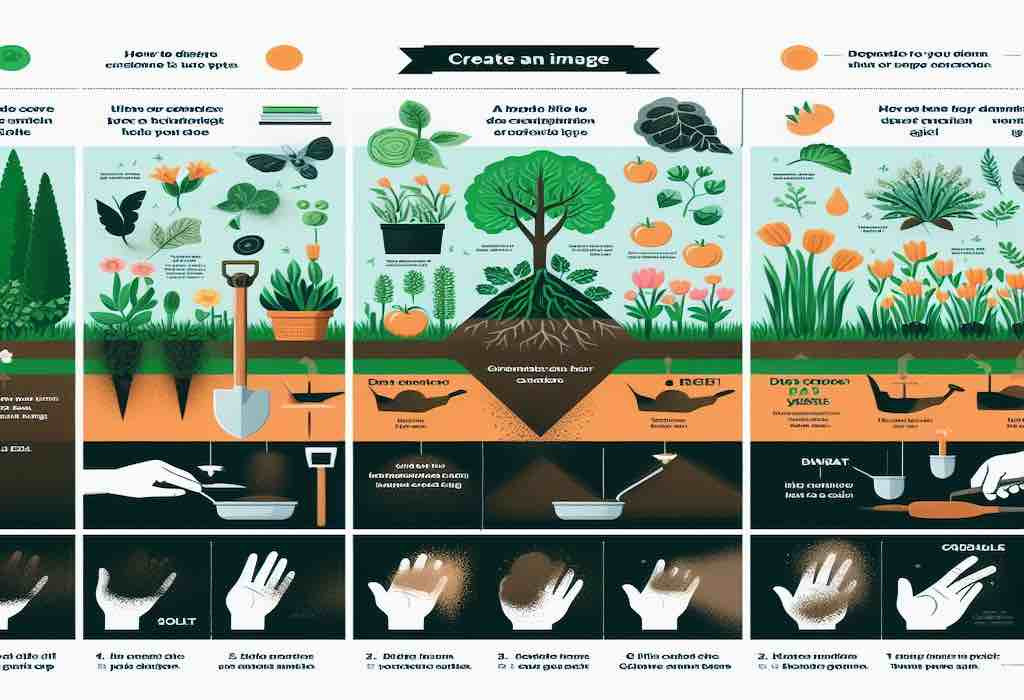Indoor Gardening Essentials: Choosing the Right Soil and Containers
Introduction To Indoor Gardening
Indoor gardening has become a rewarding way to beautify living spaces and grow fresh produce, regardless of season. One crucial element that significantly impacts the success of indoor gardening is choosing the right soil and containers. This initial choice lays the foundation for healthy plant growth and development.
Key Takeaways
- Choosing the suitable soil and containers is crucial for the success of indoor gardening.
- Different plants have specific needs, so tailor your approach to each plant.
- Ensure proper drainage in your containers to prevent issues like root rot.
- Regularly maintain and refresh your soil to keep your indoor garden healthy.
- Experimentation and adaptation are key to finding the best indoor garden.
Understanding Different Types of Soils
Soil isn't just dirt – it's a living, breathing entity that nourishes and supports plant life. In indoor gardening, the primary soil types include potting mix, organic soil, and hydroponic mediums, each serving different purposes:
- Potting Mix: Lightweight and designed to prevent soil compaction, this mix promotes proper air and water flow.
- Organic Soil: Enriched with natural compost, organic soil supports plant growth without synthetic chemicals.
- Hydroponic Mediums: These soil-less options include coconut coir, perlite, and vermiculite, offering alternatives for those practicing hydroponic gardening.
Selecting the Right Soil for Your Plants
Choosing soil isn't one-size-fits-all; it should be tailored to each plant's needs. Consider the following factors:
- Plant Type: Different plants require different nutrient levels and pH environments.
- Moisture Retention: Some plants, like succulents, prefer dry conditions, while others need constant moisture.
- pH Levels: Most indoor plants thrive in slightly acidic to neutral pH environments.
Customizing soil mixes by combining different types can address specific plant needs, leading to healthier, more vibrant plants.
Table: Match soil types with plant categories to guide readers in selecting the appropriate mix for their indoor garden.
Here's a structured table to guide readers in selecting the appropriate soil mix for their indoor garden:
| Soil Type | Best for Plant Categories | Key Features |
| Potting Mix | Most houseplants, tropical plants, foliage plants | Well-draining, nutrient-rich, promotes healthy root growth |
| Organic Soil | Herbs, vegetables, flowering plants | Contains compost and natural materials, supports organic gardening |
| Succulent and Cactus Mix | Succulents, cacti, and other drought-resistant plants | Fast-draining, prevents root rot in drought-tolerant plants |
| Orchid Mix | Orchids, bromeliads, air plants | Coarse, well-aerated, prevents root rot in moisture-sensitive plants |
| Hydroponic Medium | Any plants grown in a soil-less hydroponic system | Supports water and nutrient delivery directly to roots, suitable for automated systems |

Container Basics for Indoor Gardeners
Containers are more than just plant holders; they contribute to the health and well-being of your plants. When selecting containers, consider:
- Material: Options include plastic, clay, and fabric pots, each with its unique benefits. Plastic is lightweight and retains moisture well, clay is porous and good for airflow, and fabric pots prevent overwatering by allowing excess water to escape.
- Size: Ensure the container is large enough to accommodate the plant's root system without overcrowding.
Combining the right soil with the correct container is a cornerstone of successful indoor gardening. By understanding the different options and tailoring choices to their plants' specific needs, indoor gardeners can create thriving, lush indoor oases that bring life and color to any space.
Matching Plants with the Right Containers
The compatibility between plants and their containers is pivotal in their growth and well-being. Different plant species require varying container sizes and shapes to thrive:
- Importance of Container Size and Shape: A container that's too small can restrict root growth, leading to stunted plant development. Conversely, a too-large pot holds excessive moisture, risking root rot.
- Determining the Appropriate Container Size: Generally, select a pot that is 2-3 inches larger in diameter than the plant’s root ball. This allows ample room for growth without retaining excessive moisture.
Drainage: The Key to Healthy Indoor Plants
Proper drainage is critical in preventing water accumulation at the bottom of containers, which can cause root rot and other moisture-related diseases:
- Proper Drainage is important because it ensures that excess water can escape, maintaining the right moisture level in the soil.
- Improving Drainage in Containers: Utilize pots with drainage holes, add a layer of pebbles or broken terra cotta pieces at the bottom, and consider using a well-draining potting mix.
Maintaining Soil Health and Container Condition
Regular maintenance of the soil and containers is necessary for the sustained health of indoor plants:
- Guidelines for Soil Health: Monitor soil moisture and dryness, ensure proper fertilization based on plant needs, and maintain appropriate pH levels.
- Repotting and Refreshing Soil: Periodically, plants need to be repotted to prevent compaction and refresh the nutrient content of the soil.
Troubleshooting Common Issues
Even with the best care, indoor gardeners may face challenges related to soil and containers. Identifying and addressing these issues promptly can prevent long-term damage:
- Common Problems: These can include symptoms like root rot, stunted growth, or leaf discoloration, often stemming from inadequate drainage, incorrect pot size, or poor soil condition.
- Solutions for Challenges: Adjust watering practices, improve container drainage, repot plants into suitable-sized containers, or refresh the soil to resolve these issues.
By understanding these fundamentals and maintaining vigilant care practices, indoor gardeners can ensure their plants remain healthy and vibrant, contributing to a more lush and inviting indoor environment.
Conclusion
In this comprehensive exploration of indoor gardening essentials, we've delved into the significance of selecting the right soil and containers to foster healthy plant growth. From understanding different soil types to matching plants with appropriate containers, ensuring proper drainage, and maintaining soil health, each aspect plays a crucial role in the success of your indoor garden.
While guidelines and best practices provide a solid foundation, the true art of indoor gardening lies in experimentation. Each plant is unique, and what works for one might not suit another. Therefore, I encourage you to explore different soil mixtures and container options to discover the perfect combination that brings out the best in your indoor plants. Feel free to try new arrangements and adjust your approach based on your plants' responses.
Further Resources
To further your indoor gardening journey, consider diving into additional resources that can provide deeper insights and more specific information:
- Beginner’s Guide to Indoor Gardening
- The Secrets to Successful Container Gardening
- How to Create the Perfect Plant Environment at Home
For those looking to get more technical, soil testing kits can be invaluable in understanding the specific needs of your garden's soil. Additionally, there are numerous books on container gardening that offer extensive knowledge and creative ideas for making the most out of your indoor gardening space.
Remember, the key to a thriving indoor garden is patience, care, and continuous learning. As you gain experience and knowledge, your indoor garden will grow not just in size but in beauty and vitality. Happy gardening!
FAQs about Indoor Gardening Essentials
-
What is the best soil type for indoor plants?
- Answer: The best soil type depends on the specific needs of your plants. However, a general-purpose potting mix is suitable for most indoor plants because it is formulated to provide good drainage and nutrient retention. Remember to consider your plant's specific needs regarding moisture and nutrient levels.
-
How often should I repot my indoor plants?
- Answer: Indoor plants should generally be repotted every 12-18 months or when they outgrow their current container. Signs that your plant needs repotting include roots growing through the drainage holes, water draining too quickly, or a noticeable slowdown in growth.
-
Why is proper drainage important in indoor gardening?
- Answer: Proper drainage prevents excess water from sitting at the bottom of the container, which can cause root rot and other water-related diseases. Healthy drainage ensures that your plants receive the right amount of water without becoming waterlogged.
-
How can I test the pH level of my soil?
- Answer: You can test the pH level of your soil using a soil pH tester or testing kit. These are available at gardening stores or online. Testing your soil’s pH will help you understand whether you need to adjust it to meet the needs of your specific plants.
-
Can I use outdoor garden soil for my indoor plants?
- Answer: Using outdoor garden soil for indoor plants is not recommended as it may contain pests, diseases, and weed seeds. It also needs to be optimized for container growth and provide the necessary aeration and drainage.
Call to Action
Ready to elevate your indoor gardening game? VisitTend Industrial Supplies for a wide range of gardening tools and supplies. Whether a novice or an experienced gardener, you'll find everything you need to create and maintain a lush indoor oasis. If you have any questions or need guidance, our team is here to help: sales@tendsupplies.com. Start your indoor gardening journey with Tend Industrial Supplies today and bring the joy of gardening into your home!









